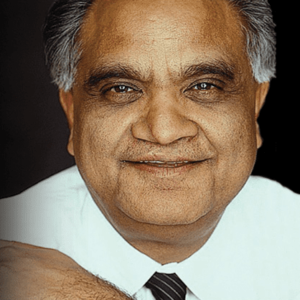Leading Through Inflation: Essentials Of Effective Communication


Part 4 of 11. See All >
The CEO’s first and most important task is to communicate, communicate, communicate. Once is never enough. Repeat the seriousness of the challenge confronting the organization and the urgency with which that challenge must be met with total candor and honesty and credibility, both internally and externally. The CEO is both an educator, ensuring the senior team understands the challenge and consequences of failure, and a social engineer, overseeing the coordination of the various functions so information flows freely and quickly from every silo, acting as a lever for the culture. Management must counter confusion and anxiety created by the media, particularly social media. This is of great importance.
When communicating, there are three essential principles to follow: Did the recipient receive the message the way it was intended? (Measure that.) Did you get the recipient’s reaction to your message? (Be sure.) What new behavior of the recipient did you discover? (Find out.) True communication is not a one-way PowerPoint presentation in which the recipient absorbs less than 20 percent of the message.
The CEO can start by rallying the team. Say, “We’re going to win in this new environment,” and communicate how you’re going to win. Yes, you’re going to take some costs out. Yes, you’re going to change some KPIs. And you’re going to have to have information come to you unfiltered from the ground so that you know what is happening with customers and with your cash position. Make sure this message is clear—no filtering, no hiding bad news. Assure employees that you are not just being defensive and making shoot-from-the-hip decisions on narrowing the focus and cutting costs. You must continue to communicate about innovations, new products and new ideas, too.
Working in conjunction with the CFO and CHRO, the company’s internal communications people should create a website or dashboard accessible to all employees and updated at least fortnightly that presents an analytical picture of the company, its competitive position and the steps it is taking to execute its strategy. It should also include macroeconomic news, such as Federal Reserve policy statements and actions and relevant international news, including price increases in various companies and industries to educate employees and partners, giving them the context of your own company’s moves. It may be appropriate to establish a hotline to respond to employee concerns and queries.
Externally, people in charge of internal and external communications need to adopt an attitude of more transparency to reduce anxiety within the company and build a relationship of trust with media outlets.
Communications staff should be proactive in establishing links to both national and local media, demonstrating that the company is methodical, solid and has a realistic view of the environment in which it is operating. The media is confused about the economy, so the communications people should work with reporters and editors to demystify the company’s situation and how the company sees the current economy and be able to clearly show how the company is working through these challenges.
At public companies, the firm’s IR people must learn in detail from the CFO and others how the company’s performance indicators will be affected by inflation and an economic slowdown and must convey that information accurately and fully to investors. Any misstep that hints at cover up or distortion will be disastrous in the investment community.
Unfortunately, most IR people’s understanding of what is going on in their industries and more globally is very inadequate right now. That does not allow them to communicate clearly what—or why—the company is doing what it is doing in the context of the larger world.
The IR person must be able to do this, to communicate clearly and unambiguously to the investment community how the company is positioning itself. They need to build a record of outcomes from the company’s actions, showing, for example, where price increases stuck and where they didn’t and be able to explain the company’s next moves as a result of that.
IR should be attuned to the investment community and able to seek out big investors who understand the company’s situation and its prospects in the post-inflation world and are willing, as a consequence, to invest in the company.
The trust part of investor relations is very important now. Be sure your IR people are spending 80 percent of their time with the buy side. Buy-side people need to know that an inflationary period is here and what you’re going to do. Your IR person has to be savvy, to extract information from investors about what is really happening in the industry. The subsectors investors are moving toward will tell you how inflation is playing out across the industry and economy.
It is imperative to have your IR person—and perhaps you, as CEO, as well—reach out to critical investors to understand their assumptions about the economy and the industry they operate in. Ask them for their views. Then, educate them on yours. Say: “I’d like to give you our worldview of the industry under inflation.” Getting at the reality of what the buy-side people are thinking is going to be the most important thing an IR person can do to help the company.
Inflation Home | Next: Transforming Sales And Marketing >


0

1:00 - 5:00 pm
Over 70% of Executives Surveyed Agree: Many Strategic Planning Efforts Lack Systematic Approach Tips for Enhancing Your Strategic Planning Process
Executives expressed frustration with their current strategic planning process. Issues include:
Steve Rutan and Denise Harrison have put together an afternoon workshop that will provide the tools you need to address these concerns. They have worked with hundreds of executives to develop a systematic approach that will enable your team to make better decisions during strategic planning. Steve and Denise will walk you through exercises for prioritizing your lists and steps that will reset and reinvigorate your process. This will be a hands-on workshop that will enable you to think about your business as you use the tools that are being presented. If you are ready for a Strategic Planning tune-up, select this workshop in your registration form. The additional fee of $695 will be added to your total.

2:00 - 5:00 pm
Female leaders face the same issues all leaders do, but they often face additional challenges too. In this peer session, we will facilitate a discussion of best practices and how to overcome common barriers to help women leaders be more effective within and outside their organizations.
Limited space available.

10:30 - 5:00 pm
General’s Retreat at Hermitage Golf Course
Sponsored by UBS
General’s Retreat, built in 1986 with architect Gary Roger Baird, has been voted the “Best Golf Course in Nashville” and is a “must play” when visiting the Nashville, Tennessee area. With the beautiful setting along the Cumberland River, golfers of all capabilities will thoroughly enjoy the golf, scenery and hospitality.
The golf outing fee includes transportation to and from the hotel, greens/cart fees, use of practice facilities, and boxed lunch. The bus will leave the hotel at 10:30 am for a noon shotgun start and return to the hotel after the cocktail reception following the completion of the round.